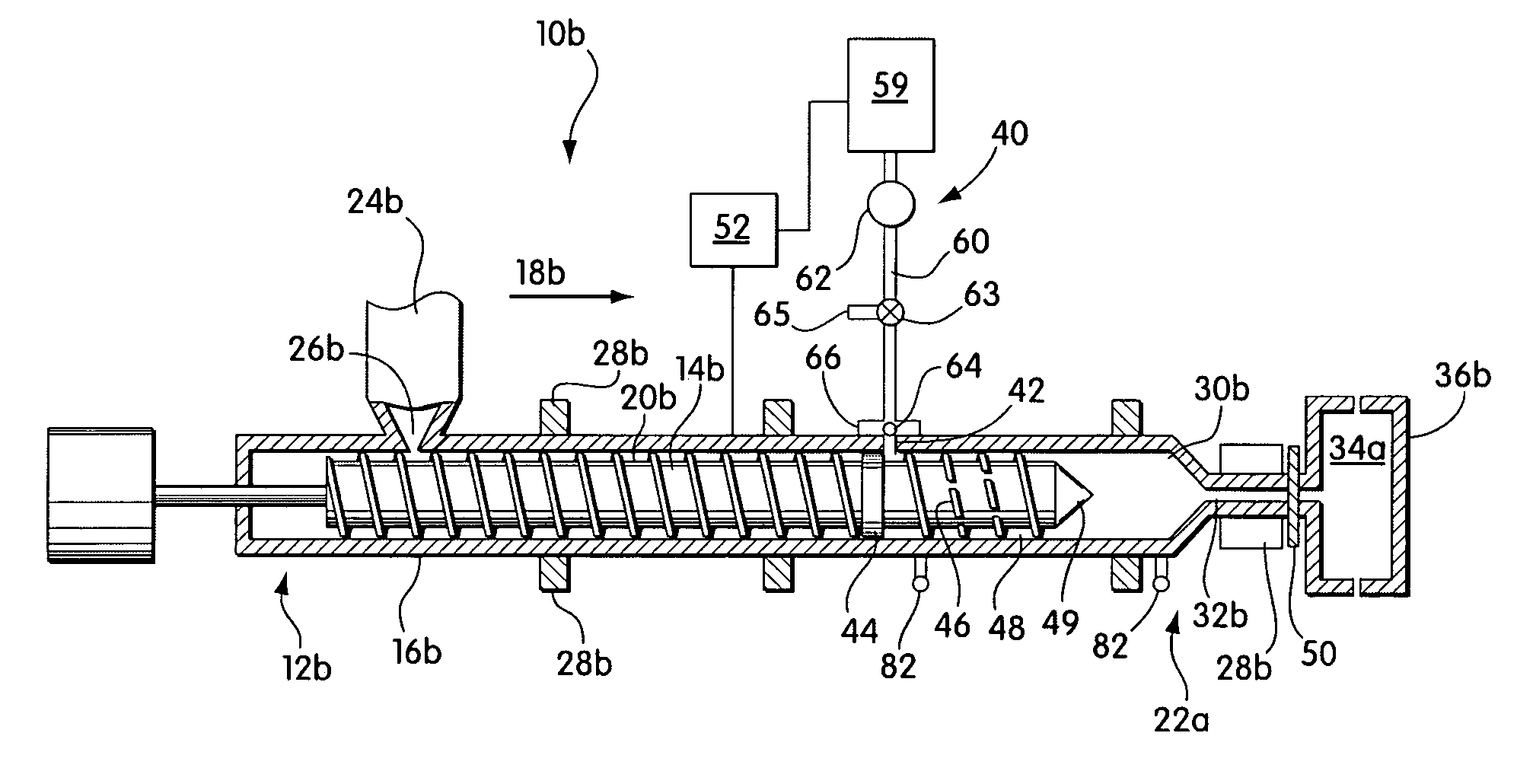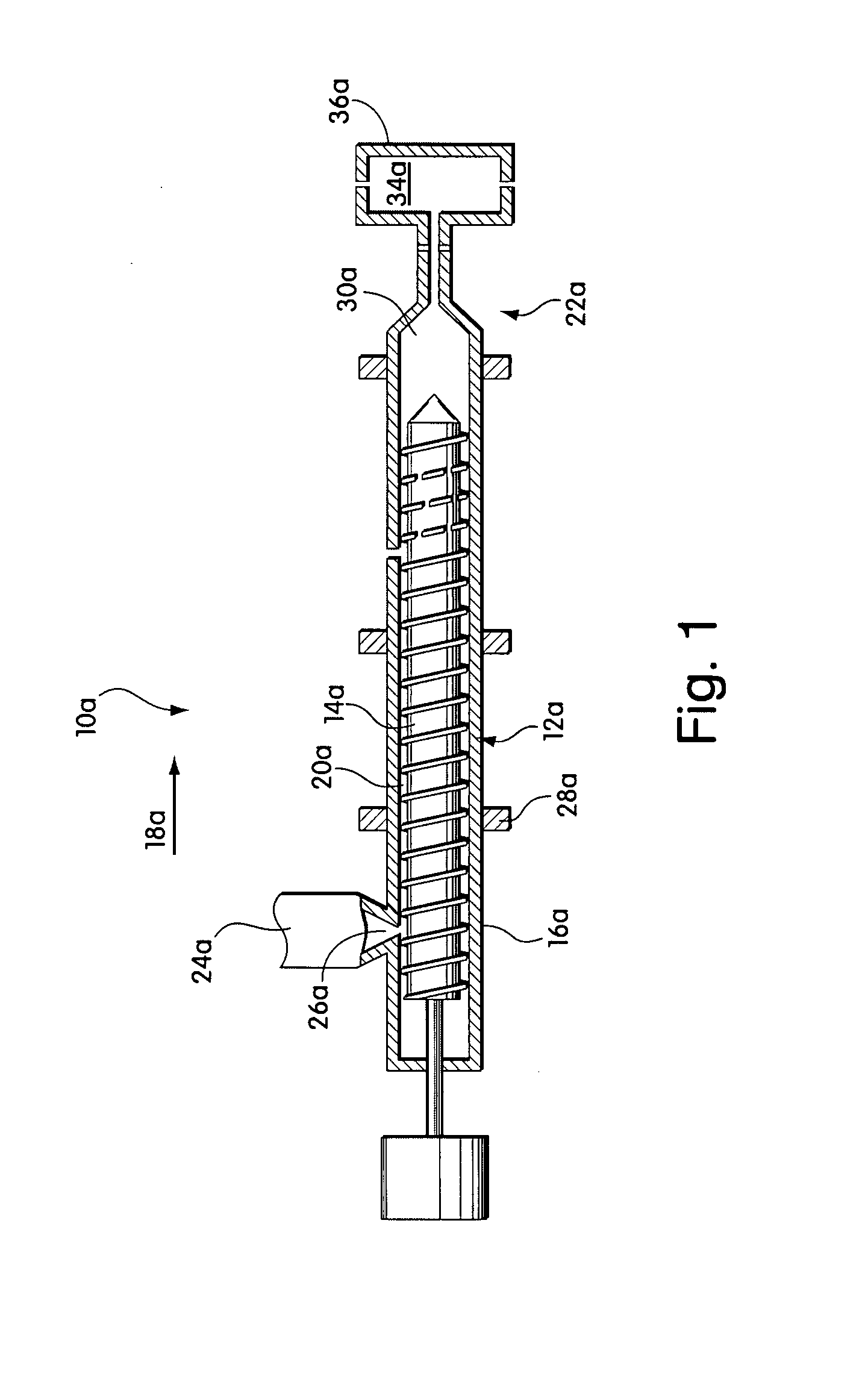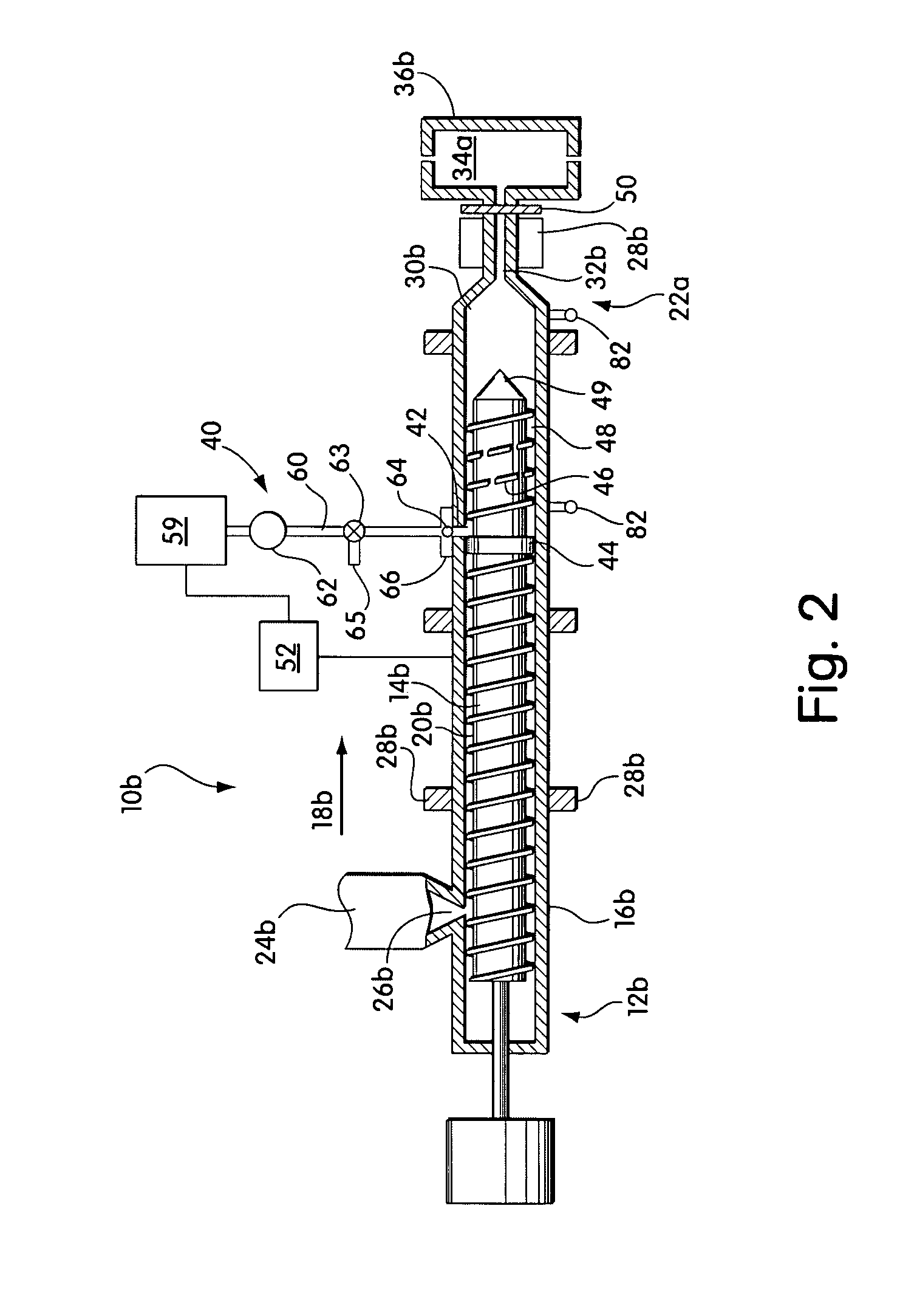Polymer processing systems including screws
a polymer processing system and screw technology, applied in the field of polymer foam material processing, can solve the problems of high l:d ratio of screws, inability to meet the aforementioned steps, and inability to meet the requirements of screw size, etc., and achieve the effect of increasing the cost of producing new or retrofitting systems that include screws with high l:d ratios
- Summary
- Abstract
- Description
- Claims
- Application Information
AI Technical Summary
Benefits of technology
Problems solved by technology
Method used
Image
Examples
Embodiment Construction
[0021]Injection molding and blow molding systems that include screws having low L:D ratios are provided. The systems are capable of producing microcellular polymeric materials. In some cases, the systems may be formed by retrofitting conventional polymer processing systems. Retrofitting may involve changing (e.g., machining or replacing) existing components of the conventional system, as well as, adding new components to the system. For example, retrofitting generally involves replacing the conventional polymer processing screw with a new screw designed to satisfy conditions needed for processing microcellular materials, as described further below. In other cases, the systems may be newly manufactured. The retrofitted or newly manufactured systems of the invention may be considerably less expensive than newly manufactured microcellular processing systems having higher L:D ratios.
[0022]FIG. 1 schematically illustrates a conventional injection molding system 10a prior to being retrofi...
PUM
| Property | Measurement | Unit |
|---|---|---|
| average cell size | aaaaa | aaaaa |
| mass flow rate | aaaaa | aaaaa |
| mass flow rate | aaaaa | aaaaa |
Abstract
Description
Claims
Application Information
 Login to View More
Login to View More - R&D
- Intellectual Property
- Life Sciences
- Materials
- Tech Scout
- Unparalleled Data Quality
- Higher Quality Content
- 60% Fewer Hallucinations
Browse by: Latest US Patents, China's latest patents, Technical Efficacy Thesaurus, Application Domain, Technology Topic, Popular Technical Reports.
© 2025 PatSnap. All rights reserved.Legal|Privacy policy|Modern Slavery Act Transparency Statement|Sitemap|About US| Contact US: help@patsnap.com



